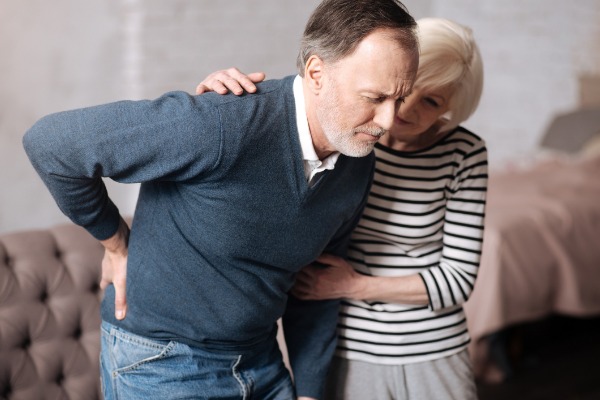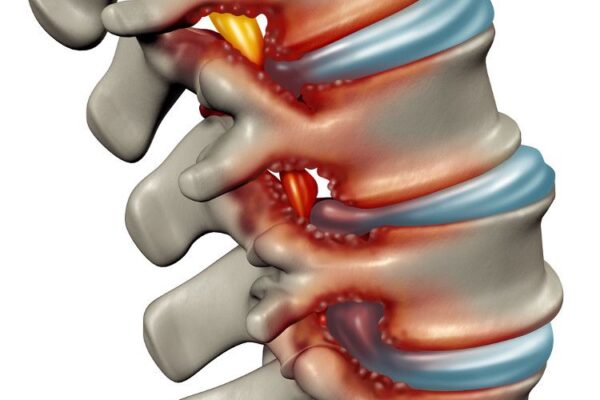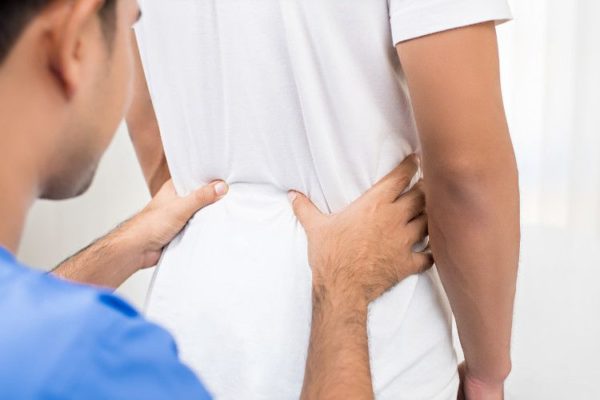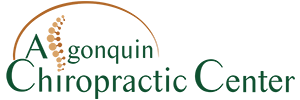Effective Spinal Stenosis Treatment in Algonquin
Our Treatments Improve Your Spinal Stenosis Within the First Month!
Have you been feeling tingling or weakness in your back and limbs for a while now? If the symptoms seem to be worsening over time, you may have spinal stenosis. This progressive illness occurs when the spaces in your spine narrow over time. This narrowing of the spine can bring more than discomfort – it can also affect your ability to walk. That’s why seeking effective spinal stenosis treatment for your condition is crucial.
At Algonquin Chiropractic Center, we identify the underlying causes of spinal stenosis and create an effective, custom treatment plan for you. Find lasting relief from your spinal stenosis symptoms without risky surgeries or potentially addictive medications!
Identify the Exact Causes of Your Spinal Stenosis
Doctors sometimes jump straight to spinal stenosis treatment without identifying the root causes of the condition. Addictive medications are often prescribed as a first choice of treatment, but these only mask the pain – they do nothing to treat the underlying issue.
You’d think that finding the exact causes of spinal stenosis would be a crucial first step to all forms of treatment, but it’s just not the case. There are many possible causes of spinal stenosis, including bone spurs, thickened ligaments and herniated discs.
During our initial assessments, we can identify what’s causing your stenosis and develop a personalized plan for your road to recovery. Our safe, holistic treatment options won’t just mask your pain but help your body heal for lasting relief from all your disruptive symptoms.
Depending on the identified cause, your spinal stenosis treatment plan may include a combination of:
- Massage therapy
- Spinal bracing
- Orthotics
- Vibrating therapy
- Laser therapy
- Rehabilitation
- The Cox Technic
- And more

Find the Ideal Spinal Stenosis Treatment for Your Situation
The best spinal stenosis treatment plan will depend on various factors. Dr. Galante recognizes that no two cases are exactly the same, so he uses the following steps to provide a custom treatment plan designed for your unique needs:
1. Initial Consultation
Dr. Galante will sit down with you to discuss the nature of your pain and other symptoms. He’ll also review your medical history to get a complete picture of your health.
2. Comprehensive Testing
Next, you’ll undergo non-invasive chiropractic, orthopedic and neurological testing to get to the root of your issue. Imaging like X-rays or MRIs may be done in some cases.
3. Spinal Stenosis Treatment
Based on his findings, Dr. Galante will create a customized spinal stenosis treatment plan if he believes he can help. If not, he’ll refer you to a trusted physician who can.
Enjoy Peace of Mind with Proven Techniques
At Algonquin Chiropractic, the numbers don’t lie. The treatments we use have statistics to prove their effectiveness. For example, using the Cox Technic, our patients usually experience a 25-50% improvement in symptoms in the first 2-4 weeks of care.
Studies have also shown that spinal stenosis patients have significantly lower pain scores after chiropractic care than after physical therapy. And overall, studies show a 91% success rate.

Avoid Potentially Addictive Pain Killers
We pride ourselves on a medication-free approach to spinal stenosis treatment. After all, the recent opioid epidemic proves that painkillers should always be tried as an absolute last resort. Instead, come to Algonquin Chiropractic, where we can reduce your pain without putting you at risk of addiction.
Experience a More Effective Approach than Risky Surgery
You may be under the impression that surgery is inevitable, but this simply isn’t true. Our treatments can progressively heal your condition over time so that surgery becomes less and less necessary. Plus, chiropractic care has fewer risks of complications than surgery, making it the best choice for your well-being.
Spinal stenosis may be your present, but it doesn’t have to be your future.
Give us a call today to start your journey to a pain-free lifestyle!
Pain or Weakness in Your Neck or Lower Back Can Be a Sign of Spinal Stenosis, a Common Condition in People Over 50
Do you often feel pain, stiffness, numbness or weakness? Does it hurt in your neck, lower back or leg? The problem may be in your spine. Spinal stenosis affects about three million Americans.
This guide covers many aspects of spinal stenosis. First, you will learn the basics about the condition. Next, you’ll learn about different types of spinal stenosis. After that, you’ll dig into symptoms and causes. Finally, you will read about diagnosis and treatment. We hope this guide helps you take the next step to a healthier life.
What Is Spinal Stenosis?
The word “stenosis” refers to narrowing in the body. Spinal stenosis is the narrowing of the neck’s bony spinal canal and nerve roots in the lower back.
Think of your spinal canal as a superhighway for your nerves. The nerves in your spinal canal carry messages from your brain to the rest of your body. Narrowing this highway, therefore, causes pain and discomfort. For example, you may get a tingling feeling or numbness in your arms or legs.
Spinal stenosis is a progressive condition. In other words, it usually gets worse. There is no cure, but treatment makes a big difference. That’s a good reason to get help right away.
Algonquin Chiropractic is experienced in treating spinal stenosis without surgery. We draw on multiple approaches to develop a treatment plan that fits your needs.

What Are the Types of Spinal Stenosis?
There are two main types of spinal stenosis. Each type is based on where the narrowing occurs.
Lumbar spinal stenosis affects the lower back. The lower back is also called the lumbar spine. Cervical spinal stenosis affects the upper part of the spine, in your neck. This is the cervical spine.
Lumbar Spinal Stenosis
Nerves branch out from nerve roots in your lower back. When you have lumbar spinal stenosis, these nerve roots are compressed. Pain and other symptoms occur as a result. The pain usually starts in the lower back and moves into the legs.
Lumbar spinal stenosis is the most common kind of spinal stenosis.
Cervical Spinal Stenosis
Cervical stenosis is more severe than lumbar spinal stenosis. That’s because the spinal cord is squeezed rather than the nerve roots. Pain and other symptoms are felt in the neck, arms, and upper back.
Cervical spinal stenosis can cause severe weakness or even paralysis. Paralysis is a medical emergency; therefore, you should get medical help if this happens.
What Are the Symptoms of Spinal Stenosis?
Spinal stenosis symptoms can vary widely. These are common signs:
- A radiating feeling of numbness or tingling down the back and leg
- A burning sensation in the arms
- A cold or hot feeling
- A “pins-and-needles” sensation
Symptoms develop slowly over the years. Your pain and other symptoms will likely come and go rather than remain the same.
Lumbar Spinal Stenosis Symptoms
Sciatica is a common symptom of lumbar spinal stenosis. Sciatica causes shooting pain, tingling, numbness and weakness. The symptoms often start in the lower back. Next, they move into the buttocks and thighs. Your lower leg and foot are another area that may be in pain as a result.
Sciatica usually affects only one leg. The pain is generally worse when walking.
Other symptoms include:
- Cramping in the feet, legs or thigh
- Leg or foot weakness
- Bladder or bowel difficulties
- Problems in sexual functioning
Certain activities often trigger pain. For example, walking for even a short distance could be a challenge. What makes things better? Shifting your position. For instance, lying down for a while may help. Leaning forward, as on a grocery cart, may ease the pain.
Cervical Spinal Stenosis Symptoms
Symptoms of cervical spinal stenosis are usually in the upper part of the body. The neck, arms or hands are most affected, for example.
Here are the common symptoms of cervical spinal stenosis:
- A feeling of heaviness, tiredness, burning or numbness
- Arm, neck or shoulder pain
- Problems doing small tasks, such as buttoning a shirt
- Electric shock-type pain in the arms or the trunk
- Falling or feeling clumsy
Cervical spinal stenosis can also cause incontinence and other bladder and urination problems.
What Causes Spinal Stenosis?
Spinal stenosis often stems from age-related changes in the spine. People over age 50 are more likely to have the condition. Arthritis is often a significant factor. It also causes wear-and-tear changes in the spinal bones.
Age-related causes of spinal stenosis include:
- Thickening of the ligaments that connect bones in the spine
- Small growths called bone spurs pushing into the spinal canal
- Breakdown of the cushioning discs between each vertebra
- Irritation of nerves because of liquid leaking from a nearby herniated disc
- Deterioration of other bones in the spine
Age is not always the cause, however. Some people are born with a narrow spinal canal. A traumatic injury, such as a car accident, may also damage the spine. Similarly, an infection or a tumor may be to blame.
How Is Spinal Stenosis Diagnosed
You can expect a thorough exam when you seek spinal stenosis treatment. First, you’ll answer questions about your health history. Other questions are also likely, such as:
- What are your symptoms?
- When did the symptoms start?
- Where is the pain?
- What makes you feel worse?
- What makes you feel better?
The physical exam will show where the spine or neck movement is restricted. Your leg and arm strength will be tested, for instance. You may also be asked to walk several steps or bend over. Tests of your reflexes can show whether you have a neurological problem.
Noninvasive diagnostic tests provide further information:
- X-rays reveal the alignment of the spine as well as show the joints.
- CT scans combine multiple X-rays. This offers a more detailed view. It shows the shape and size of the spinal canal and the bones surrounding it.
- An MRI offers an in-depth look at the body. The spinal cord and nerve roots are a likely target. The surrounding area is also displayed. MRIs provide another benefit. They highlight an enlarged or damaged part of the body.
Sometimes, the test results are not clear. The doctor may then order another test.
What Spinal Stenosis Treatment is Available?
Spinal stenosis treatment focuses on managing the condition above all. Helping you be as active as possible is, therefore, a major goal. You can choose between chiropractic care and medical care. Each model of care has a different approach.
The Chiropractic Model for Spinal Stenosis Treatment
Chiropractic care promotes natural healing. Therefore, noninvasive, drug-free methods are emphasized. Algonquin Chiropractic Center offers multiple techniques to provide long-term relief. We also tailor a coordinated program of home exercise, diet and nutrition.
These approaches may be used alone or combined as needed:
- The Cox Technic, a gentle adjustment procedure
- Whole body standing vibration
- Spinal manipulation
- Physical therapy
- Laser therapy
- Spinal bracing or use of a walker
- Orthotics to provide support
Chiropractic providers also work closely with other specialists when needed. These may include radiologists, orthopedic surgeons, neurologists and pain management doctors.

The Medical Model for Relieving Spinal Stenosis Symptoms
Typical medical treatments focus more on medicines. The doctor may prescribe pain relief medication, including opioids, for instance. Muscle relaxants and anti-seizure medicine may also be prescribed to treat symptoms. Corticosteroid injections are sometimes recommended.
The risks of opioid addiction are well known. Many of the other medications also have unpleasant side effects. Focusing on medicine has a major drawback. Medicines cover the pain but do not get to the root of the problem. As a result, your health may get worse.
Surgery is generally reserved for only the most severe cases. Easing pressure on the spinal cord is the goal of surgery for spinal stenosis.
Any surgery brings a risk of bleeding, infection and complications with anesthesia. Spinal stenosis has unique risks, however. These risks are:
- Damage to sensitive nerves
- Harm to tissues
- Chronic pain
- Difficulty urinating
Can Exercise Help with Spinal Stenosis?
We’ve all heard the term “move it or lose it.” Following this advice is vital if you have spinal stenosis. Inactivity can reduce your strength and flexibility. As a result, it will become more challenging to get around and enjoy life.
Benefits of exercise include:
- Keeping muscles from tightening, which could worsen symptoms
- Increased blood flow, bringing nutrients and oxygen to the area
- Helping you stay a healthy weight, putting less pressure on the back and legs
Stretching and strength exercises are good options. For example, Tai Chi, swimming, and other types of water exercises are helpful. They avoid jarring movements that may cause pain. You can do some exercises from a chair if standing is painful.
Exercise is a crucial part of both medical and chiropractic care. A physical therapist may design the best exercises for you. Consider changing your routine if a once-favorite exercise hurts you. Riding a bike may be more comfortable than walking, for instance.
How Algonquin Chiropractic Center Can Help
Do the spinal stenosis symptoms on this page sound familiar? It’s time to see the experienced spine specialists at Algonquin Chiropractic in Algonquin, IL. We will evaluate your situation and develop a spinal stenosis treatment plan to get you back on the right track. Call for an appointment today at 847-854-2000 and put the pain behind you.
